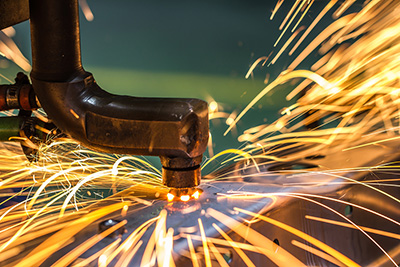TWS is a Great Training Option for Everyone
Learn more about how we can prepare you to advance your career.
Do you weld stainless steel parts and components? Did you know that they can rust and corrode easily? There is a standard way to reduce rust and corrosion of stainless steel. This process is called passivation. So, what does weld passivation do?
What Does Weld Passivation Do?
Weld passivation is a process in stainless steel welding that uses nitric or citric acid to remove free iron from the surface.1 This chemical treatment creates a protective oxide layer or passivation film that is less likely to react to air and cause corrosion)
Why Passivate Stainless Steel?
There are a few reasons to passivate stainless steel parts and components. It offers:
• A chemical barrier against rust
• An extended product lifecycle
• Decontamination of the metal surface
• A reduction in maintenance due to lower rust and corrosion.
Have You Considered a Career in the Skilled Trades?
Fill out the form to recieve a no obligation info packet.
How Does Passivation Work?
Stainless steel is comprised of iron, nickel, and chromium. Chromium forms a thin chromium oxide layer when exposed to oxygen in the air. The passivation process for stainless steel helps cover the surface and protect the iron from rusting. Passivation is done by immersing the stainless steel in an acid bath that dissolves free iron, leaving the chromium intact. Removal of the free iron helps corrosion from setting into the stainless steel. The passivation process includes a few steps:
Step #1: Clean the Stainless Steel
The stainless steel is cleaned using alkaline to remove contaminants from the metal. Then, the stainless steel goes through a water rinse cycle.
Step #2: Passivate
Once the stainless steel is clean, it is immersed in a bath of nitric or citric acid. Another water rinse cycle is completed, and the metal is dried of all liquid.
To complete the passivation process, the stainless steel needs to stay immersed in the acid bath for around 20 to 30 minutes. Some passivation specifications call for adding sodium dichromate to create the passivation film quicker.
Step #3: Test the Stainless Steel
The final step is testing the parts to ensure they are adequately passivated. This includes spraying salt, exposure it to a high-humidity chamber, or testing it with copper sulfate. Other tests include water immersion, potassium ferricyanide-nitric acid, or free iron tests.
When is Passivation Required?
Passivation is used after welding, grinding, cutting, and manipulating stainless steel. It can help protect against corrosion and rust from foreign dirt and materials that might sit on the surface of the stainless steel. It can also help if sulfides are added to the stainless steel to improve machinability or if particles of iron are embedded into the surface of the machined part using a cutting tool.
Want to Learn More?
The Professional Welder & Welding Specialist with Pipefitting programs at Tulsa Welding School’s Houston campus starts by helping you know what it’s like to be a welder in interactive workshop courses and welding booths. You’ll be trained in structural, flux core, and pipe welding in as little as seven months. You’ll also be prepared to excel in job interviews and welding tests for various certifications.
Read about the types of welding careers you can pursue with your skills. Ready to start a Professional Welding program or Welding Specialist with Pipefitting program? Contact us today about our welding certification preparation program.







